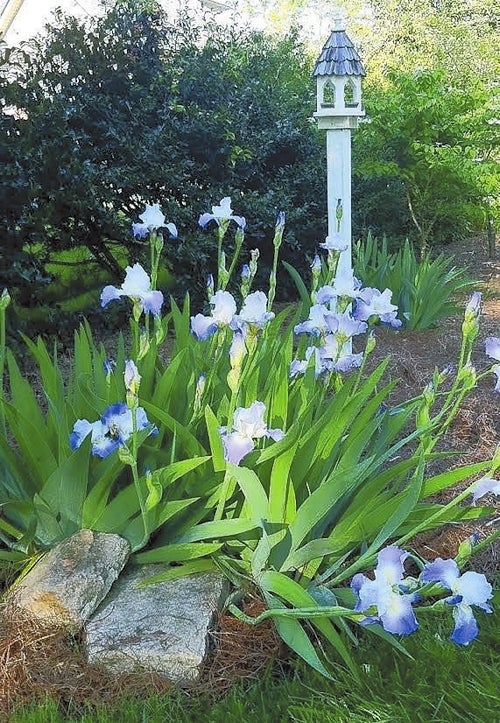Darrell Blackwelder Q&A: Irises, fungus and fertilizer
Published 12:00 am Friday, April 24, 2015

- The best time to plant bearded iris is July through September.
The weather has been less than perfect over the past few days. However, with the cooler-than-normal temperatures and excessive moisture, many continue to call with questions about their landscapes. Below are a few gardening questions Cooperative Extension received earlier this week that may be of interest to other home gardeners.
Question: From an email — My mother-in-law’s neighbor has an interesting fungus popping up all over his yard. Do you have any clue to what it is and what he should do about it?
Answer: This is a superficial fungus (dog vomit fungus) that occurs in humid weather and does not kill shrubs or grass. It normally occurs on mulch, especially on mulch with undecomposed wood. There are no sprays for this fungus. Take a rake and spread out the mulch. When dry weather returns, the mulch will dry out and it will disappear. The fungus is completely harmless to humans, animals and plants.
Go to http://granville.ces.ncsu.edu/2010/04/fuligo-septica-the-dog-vomit-slime-mold-in-landscapes-2/ for more detailed information about this fungus.
Question: I have some bearded irises that are blooming and spreading. Unfortunately, they are spreading so fast, and I need to move them to another location. When is the best time of year to relocate irises?
Answer: The best time to plant bearded iris is July through September. This will allow them to become well established before winter. In a well-prepared bed, dig a shallow hole large enough to accommodate the rhizome or clump of rhizomes. Form a mound of soil in the center for the planting base. Make the mound high enough so the top of the rhizome is slightly above soil level. Spread the roots around the mound; fill with soil, and water them thoroughly. Irises usually have a high success rate when transplanting.
Go online to http://www.ces.ncsu.edu/hil/hil-8506.html for more detailed information.
Question: Is now a good time to fertilize my shrubs? I know that lawns are fertilized in the spring, but when do you fertilize trees and shrubs?
Answer: Yes, now is a good time to fertilize your shrubs. Spring is the best time to fertilize because it avoids leaching during the winter. Avoid fertilization in late summer (August), since it may stimulate late-season growth that fails to harden off before frost. Slow-release fertilizers are becoming very popular because it allows constant release of nutrients slowly all summer for constant feeding.
Go to http://content.ces.ncsu.edu/a-gardeners-guide-to-fertilizing-trees-and-shrubs.pdf for detailed information on fertilizing trees and shrubs in the landscape.
Darrell Blackwelder is the County Extension director with horticulture responsibilities with the North Carolina Cooperative Extension Service in Rowan County. Learn more about Cooperative Extension events and activities by calling 704-216-8970, Facebook or online atwww.rowanextension.com




